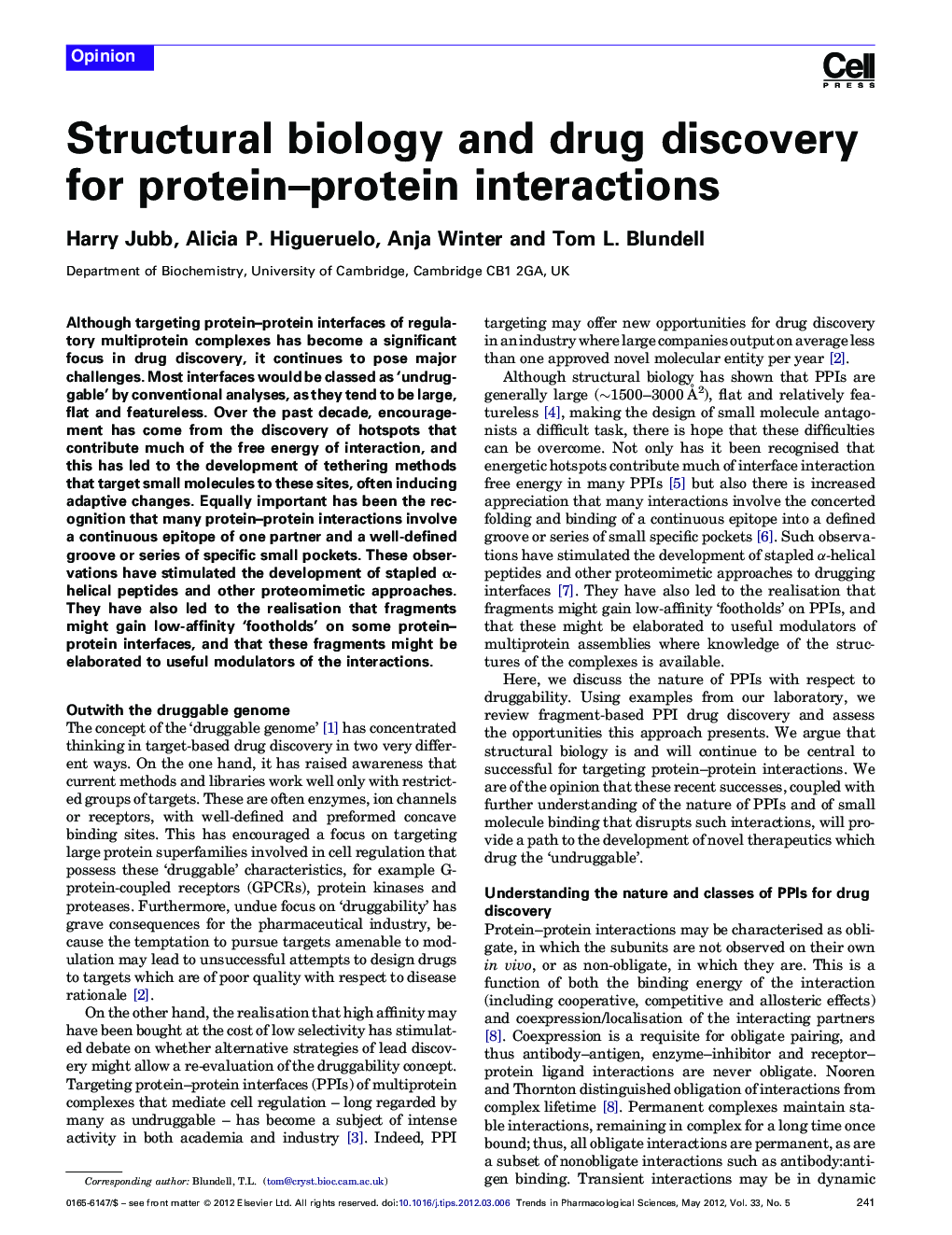| Article ID | Journal | Published Year | Pages | File Type |
|---|---|---|---|---|
| 2572904 | Trends in Pharmacological Sciences | 2012 | 8 Pages |
Although targeting protein–protein interfaces of regulatory multiprotein complexes has become a significant focus in drug discovery, it continues to pose major challenges. Most interfaces would be classed as ‘undruggable’ by conventional analyses, as they tend to be large, flat and featureless. Over the past decade, encouragement has come from the discovery of hotspots that contribute much of the free energy of interaction, and this has led to the development of tethering methods that target small molecules to these sites, often inducing adaptive changes. Equally important has been the recognition that many protein–protein interactions involve a continuous epitope of one partner and a well-defined groove or series of specific small pockets. These observations have stimulated the development of stapled α-helical peptides and other proteomimetic approaches. They have also led to the realisation that fragments might gain low-affinity ‘footholds’ on some protein–protein interfaces, and that these fragments might be elaborated to useful modulators of the interactions.
